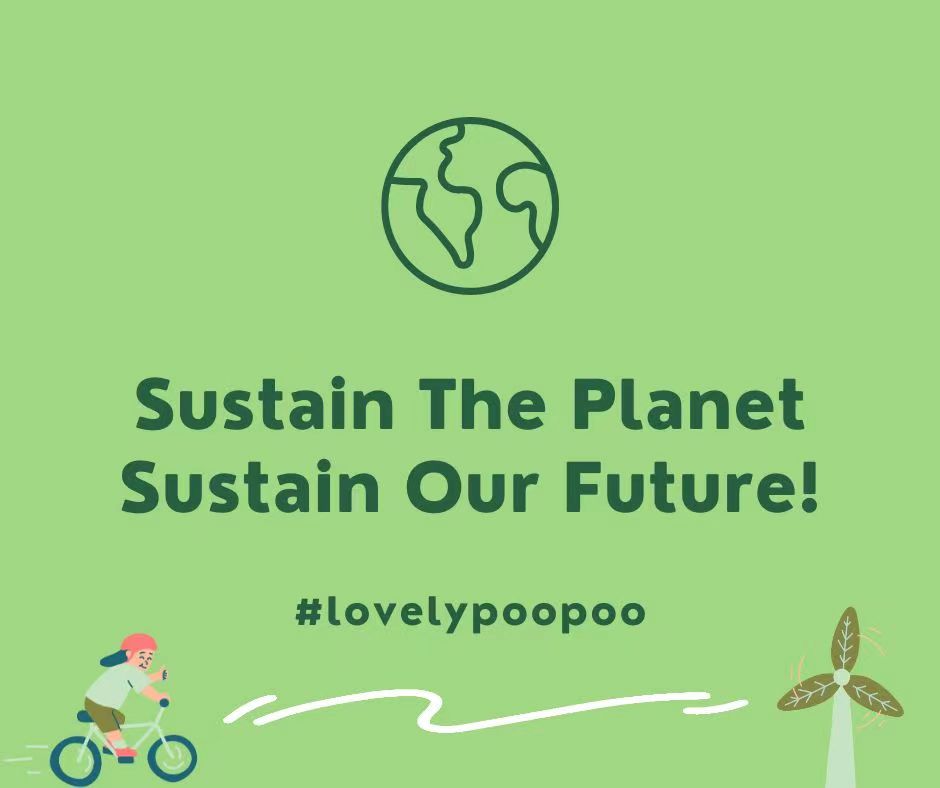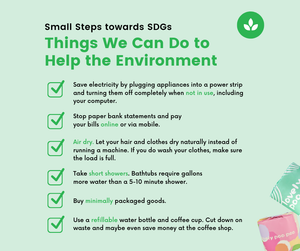What is sustainable development?
The concept of "sustainability" comes from the development of science and the consumption of resources. For a resource to be sustainable, its reserves need to be replenished faster than it can be extracted. Yet today, when we talk about sustainability, it goes far beyond the vision of resource availability
Why sustainable resource development?
As awareness of growing environmental concerns developed in the 1960s, the triumph of Apollo 17 and the first color photograph of Earth in 1972 accelerated the first global discussions on the issue. A photo called "Blue Marble" was taken by the astronauts of the Apollo 17 spacecraft on the way to the moon on December 7, 1972. This photo reveals a fact: Although human beings have recognized themselves Location on Earth, but in real life, the view of Earth from the outside shows how small we are as individuals compared to our environment.
Sustainability encourages us to consider our impact on future generations and take action to ensure that present and future generations can thrive.
In addition, this concept of sustainable development fundamentally combines environmental protection with economic and social issues, thus forming the so-called "triple bottom line method" (referring to economic bottom line, environmental bottom line and social bottom line), that is, enterprises must fulfill The most basic economic responsibility, environmental responsibility and social responsibility.

5 Reasons to Believe in Sustainability
1. The implementation of the sustainable development strategy is conducive to promoting the unification of global ecological benefits, economic benefits and social benefits.
2. It is conducive to promoting the transformation of the economic growth mode from extensive to collective, so as to coordinate economic development with population, resources and environment.
3. It is conducive to the sustained, stable and healthy development of the national economy and the improvement of people's living standards and quality.
4. Shift from focusing on short-term interests and local interests to long-term interests and overall interests, and from material resources-driven development to non-material resources or information resources (science and technology and knowledge)-driven development.
5. The earth has a large population, a shortage of natural resources, and a backward economic base and technological level. Only by controlling population, saving resources, and protecting the environment can a virtuous circle of society and economy be achieved, so that the development of all aspects can continue to have stamina.
Protect the Environment
In order to achieve global environmental sustainability, we must protect the natural environment. This includes terrestrial and marine ecosystems on which human life ultimately depends for nourishment.
We depend on the economic benefits and livelihoods that agriculture provides. Plants provide 80% of food for humans. Wildlife also depends on land, as forests cover about 30 percent of the planet and provide essential habitat for millions of species. Plus, healthy forests are vital to clean air and water, and they're even carbon sinks.
Human life also depends on the systems powered by the world's oceans. More than 3 billion people worldwide depend on marine and coastal biodiversity. Oceans provide more than half of the oxygen on Earth, on which humans depend. And, like forests, oceans are effective carbon sinks that can help address the climate crisis.
Much of the heat that greenhouse gases add globally is absorbed by the oceans, which have warmed more than 0.6 degrees Fahrenheit since 1969 in the top 330 feet of the ocean. Rising temperatures have environmental consequences such as ocean acidification, making our oceans less productive and less sustainable.
Environmental protection has progressed since 2015, when the United Nations committed itself to protecting land and sea. The average percentage of the protected area of key marine biodiversity in the world increased from 30.5% in 2000 to 44.8% in 2015. It jumped another percentage point from 2015 to 2019.
The world's forests are continuing to decline, but at a slower rate than in the past. An estimated 10 million hectares were deforested between 2015 and 2020, down from 12 million hectares in the previous five years. As of 2020, the proportion of protected or sustainable forests has increased or stabilized in most regions of the world. Sustainable forestry must be prioritized to save human livelihoods, protect wildlife and address the climate crisis.
Environmental Sustainable Development Definition
A sustainable system is one in which the cycle can continue independently of external resources. Environmentally sustainable systems or processes can be thought of as a wheel: they are structurally sound and do not require a constant flow of external resources to keep them rolling; they can do the work themselves.
Clean energy is the best example of environmental sustainability. Clean, renewable energy must come from independent sources that can be produced continuously. It's a system that doesn't rely on consuming natural resources; instead, fuel sources that are self-healing, such as wind and solar.
As the global population continues to climb, more and more people will need electricity. Investing in renewable energy can solve this problem without harming the planet. According to the United Nations Sustainable Development Goals, correct energy efficiency policies can contribute to reducing global greenhouse gas emissions by more than 40% and effectively address climate change.
Organize for Change
While individual, simple changes are important for reversing climate change, individual humans aren’t doing nearly as much damage as the powerful corporations and government institutions that run the world. As of 2016, 90 companies and government-run organizations were responsible for two-thirds of carbon emissions.
That said, we can’t pressure these mega-emitters to change on our own. We must team up with other climate activists, the scientific community, and local organizations to influence change-makers—the people who have the power to enact change at scale.
Organize or join efforts to call your government representatives, vote with the planet in mind, and become a voice for the sustainability movement.
Stay Up-to-Date
Don’t stop doing your homework after the first stage. Stay up-to-date on climate change news, innovations, and government policies to efficiently direct your efforts and share accurate information with friends and neighbors.
As positive change happens, don’t be afraid to celebrate the victories. Shout the positive impacts of progress from the rooftops and share the good news about sustainability wins.
But also remember to keep your eye on the prize—a viable planet and biosphere that can sustain human, plant, and animal life for the next millennium.
Lovely Poo Poo Bamboo Paper: Sustainability for the Home
Sustainability is critical to the survival of the planet.
Where humans need to survive, where economies can benefit from sustainable change, and where environmental responsibility can improve public health outcomes, our future depends on efforts to make the planet cooler and greener.
While changing your personal lifestyle, don't forget the paper products you use in your daily life, such as paper towels and toilet paper.
These products are often made from wood pulp (a method that is rarely sustainable), but there is an alternative that could shake up the market and catalyze positive change.

At Lovely Poo Poo, we specialize in bamboo paper products. Bamboo is a more sustainable alternative to traditional tree-based paper products, and our sustainable products are 100% tree free and plastic free.our bamboo toilet paper – simple. Tree-free, fragrance-free, BPA-free, formaldehyde-free, chlorine-free, chemicals-free, 100% bamboo.
When you're ready to jump into sustainability, the Lovely Poo Poo is here to help—environmental responsibility is at hand.
How Enviro Mental Sustainability?
Many existing systems support one or two pillars of sustainable development, but the environment sector lacks. The system must raise the environmental impact pillar to be truly sustainable. Environmental sustainability can be greatly improved in a variety of systems, including energy, business, and agriculture.








